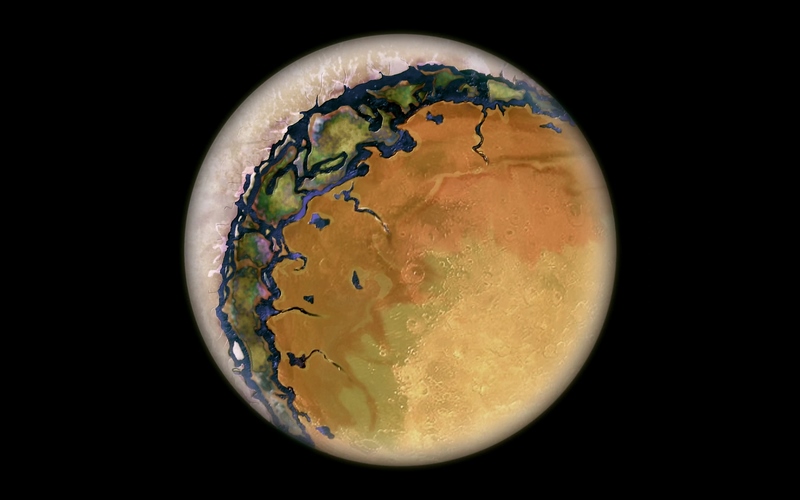
In a new study, astronomers describe how extraterrestrial life has the potential to exist on distant exoplanets inside a special area called the ‘terminator zone.’
Despite its frightening-sounding name, it’s better thought of as the “ending zone” and can be found on planets that have one side which always faces its star and one side that is always dark.
In these perpetual dawn/dusk zones, conditions would be perfect year-round for liquid water, and therefore life.
It’s wild to think about a planet that doesn’t turn—when daylight shines down on one half for all eternity, and another sits in perpetual darkness. However, exoplanets in this paradigm are likely more common than not since they’re found around M-dwarf stars, which make up about 70% of all the stars we can see.
“This is a planet where the dayside can be scorching hot, well beyond habitability, and the night side is going to be freezing, potentially covered in ice. You could have large glaciers on the night side,” Ana Lobo, a postdoctoral researcher at UC Irvine who led the new work, which just published in The Astrophysical Journal.
Lobo’s modeling work is believed to be the first of its kind that demonstrates the conditions and scenarios that show how life on these worlds would be possible.
She relied on similar methods to those used on Earth to calculate the climate here to find that a rocky world with water present would harbor ideal and relatively unchanging conditions for life in the terminator zone.
MORE ASTRONOMY NEWS: Ringed Planet That Defies Known Physics Discovered in Outer Reaches of Our Solar System
“Ana has shown if there’s a lot of land on the planet, the scenario we call ‘terminator habitability’ can exist a lot more easily,” said co-author Aomawa Shields, UCI associate professor of physics & astronomy. “These new and exotic habitability states our team is uncovering are no longer the stuff of science fiction—Ana has done the work to show that such states can be climatically stable.”
In her paper, Lobo explains that if her models are correct, future observations of the atmospheres of exoplanets orbiting M-dwarf stars should be conducted around the terminator belt where every moment of every day is like the hour just before sunrise.
SHARE This Wild Astronomy Work With Your Friends…



















